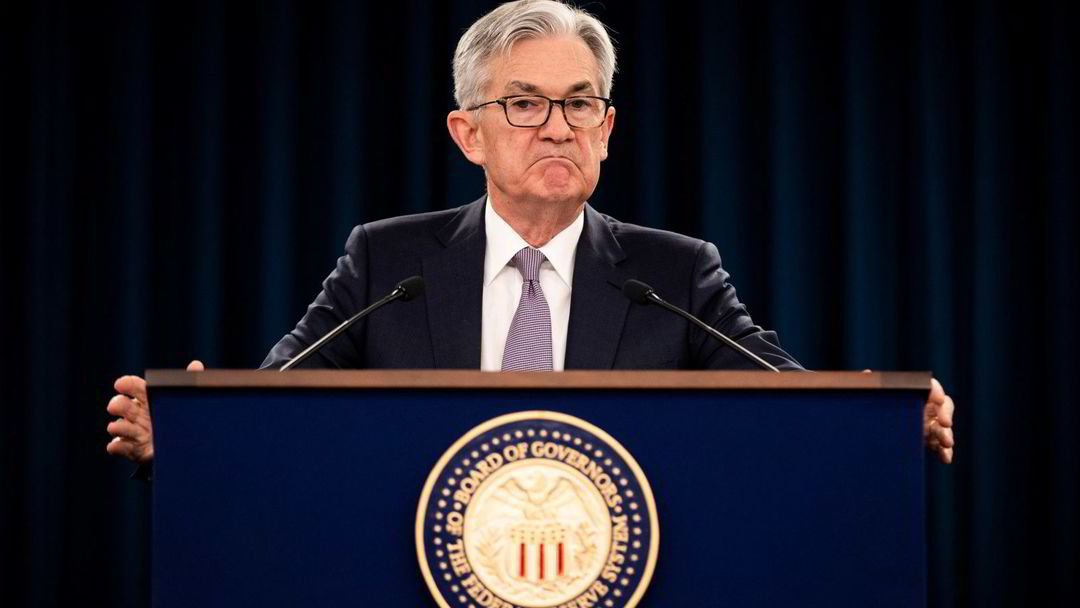The interest rate committee was unanimously behind the decision to raise the interest rate by half a percentage point on Wednesday evening. The key rate will now be in the range of 0.75 to 1.0 per cent.
Initially, there were no new signs of further rate increases. Powell estimated in March that the key interest rate at the end of the year would be 1.9 per cent.
The interest rate decision was met with uncertainty on Wall Street. Three quarters of an hour after the interest rate decision, the three central indicators on Wall Street were swinging up and down from positive to minus and reversing several times.
After Powell ruled out new rate hikes that could be larger, 0.75 percentage point, Wall Street rose sharply. In the past hour alone, the three major indexes are up another 1 percent from already strong gains.
- The Standard & Poor’s Index closed 3.04 percent
- The Nasdaq Composite Index rose 3.19 percent
- The Dow Jones Index increased 2.87 percent
According to the Associated Press, Wednesday’s rise was the biggest in two years.
Big tech companies, Apple and Meta, were up more than 2% before the announcement, while other companies were in the red. After the interest rate decision, they pulled back a bit, but after just over an hour everyone was in good shape, before also rising before the trading day ended:
- Apple: +4.1%
- Microsoft: +2.9 percent
- Amazon: +1.4%
- Alphabet C: +4.2 percent
- Tesla: +4.8%
The price of oil also received a new boost after interest rates rose, and Brent oil with delivery in June will sell at 22.07 Wednesday night at just over $110 a barrel. It has risen $5.50 since Tuesday.
Historical
It’s been 22 years since the last time the Federal Reserve, the US Federal Reserve, raised its key interest rate by 0.5 percentage point. While the normal rate is 0.25 percentage point and some have argued that 0.75 is now required, the market is priced at 99 percent that Wednesday’s rate increase should fall at 0.5 percentage point.
All three indices rose on Monday and Tuesday, but since the new year, US stock markets have been in turmoil, especially on fears of rising inflation.
Confidence in the central bank has waned in recent months after the Federal Reserve insisted, even a few months ago, that the accelerating rise in rates was of a short-lived nature.
Latent fear of inflation
The central bank’s goal is to try to cool inflation, which has reached historically very high levels.
Inflation in the US rose in March to 8.5% on a 12-month basis, the fastest increase in 40 years.
The biggest fear is a prolonged recession, as the economy slumps, which often means higher inflation.
Last week, it became apparent that the US economy unexpectedly declined by 1.4 percent in the first quarter on a 12-month basis. In comparison, growth in the fourth quarter was substantial, 6.9 percent. The background to the decline in the first quarter was the increase in the trade deficit, with exports falling and imports rising at higher prices, while consumption growth increased from 2.5 to 2.7 percent. (Conditions)Copyright Dagens Næringsliv AS and/or our suppliers. We would like you to share our cases using a link that leads directly to our pages. All or part of the Content may not be copied or otherwise used with written permission or as permitted by law. For additional terms look here.

“Explorer. Unapologetic entrepreneur. Alcohol fanatic. Certified writer. Wannabe tv evangelist. Twitter fanatic. Student. Web scholar. Travel buff.”




